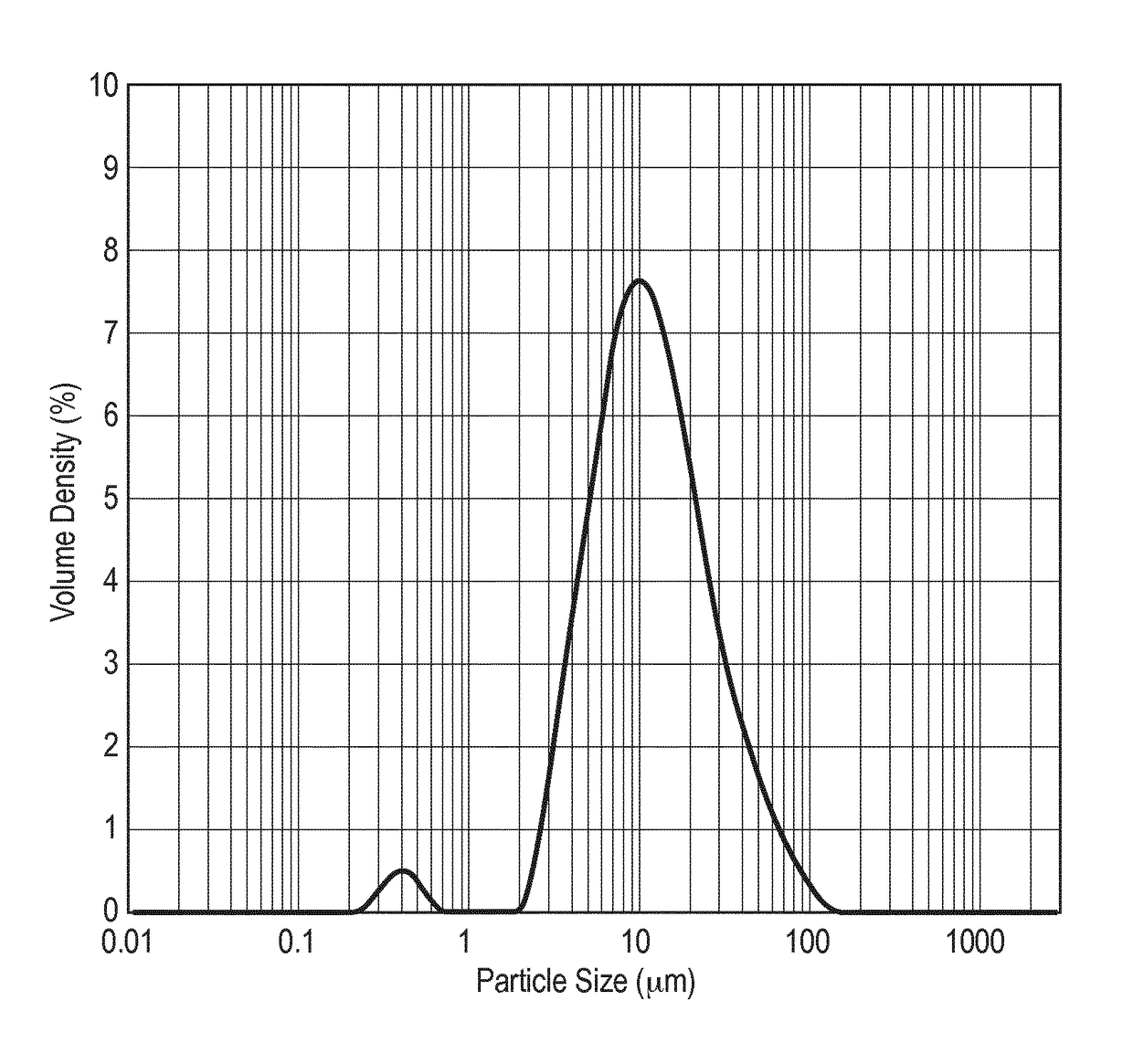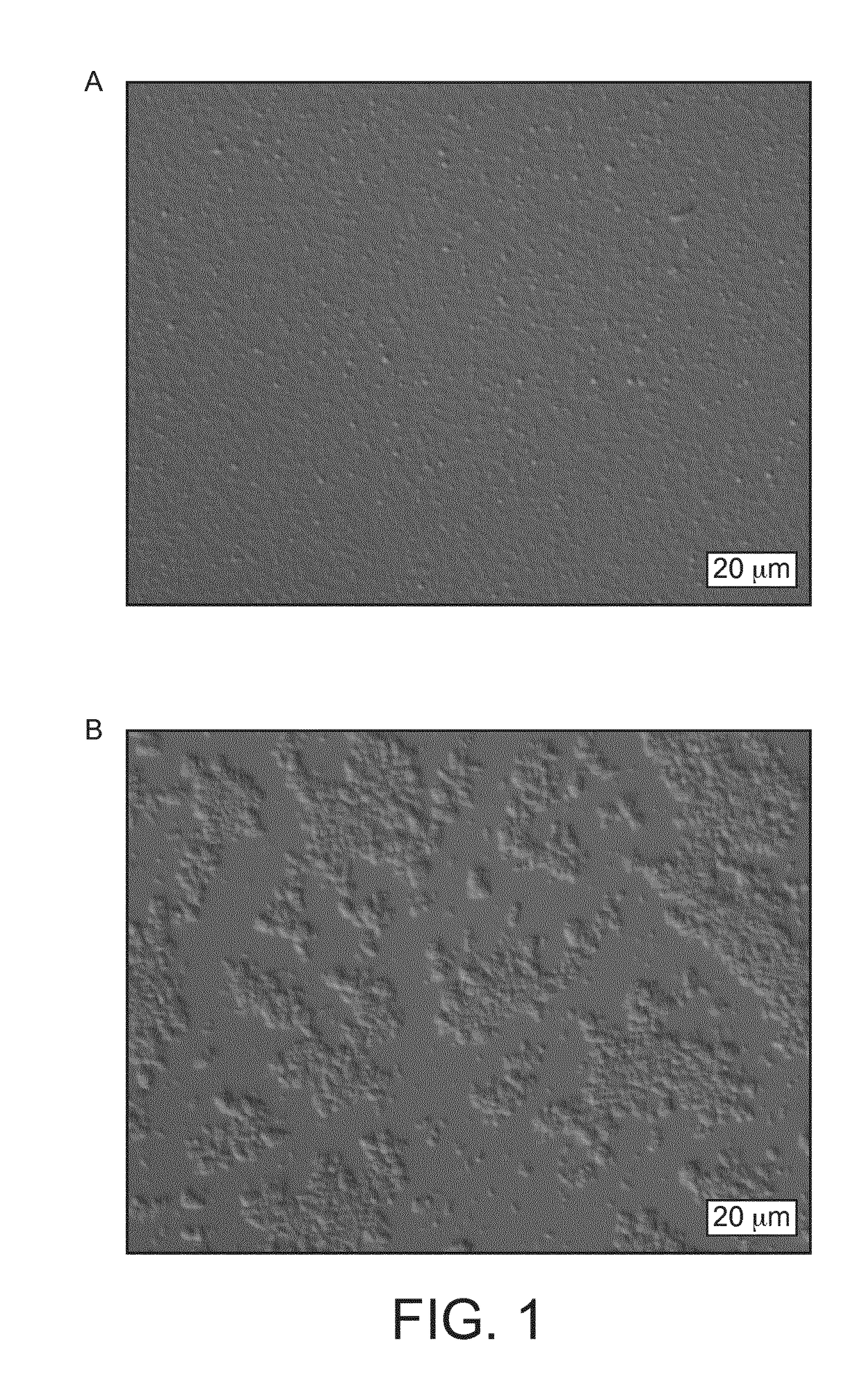Milk concentrates with improved mouth feel
a concentrate and mouth feel technology, applied in the field of milk concentrates, can solve the problems of increasing the length of the ingredient list, increasing the formulation cost, and not achieving big results
- Summary
- Abstract
- Description
- Claims
- Application Information
AI Technical Summary
Benefits of technology
Problems solved by technology
Method used
Image
Examples
example 1
Reference 1 (Whole Milk)
[0050]Raw milk (protein (N×6.38) 3.4%, fat 4.0%, total solids 12.8%) is preheated to 60° C. by a plate heat exchanger and homogenized by a Gaulin 53 KF3 8PSX high pressure homogenizer (250 bars). Subsequently, the homogenized milk is concentrated by a Scheffers 3 effects falling film evaporator (from Scheffers B.V.) to approximately 35% total solids. The milk concentrate is cooled by a plate heat exchanger to 4° C. and pH of homogenized liquid milk concentrate was measured to be 6.5. The composition is preheated again to 60° C. by a plate heat exchanger and subsequently heated to 85° C. by direct steam injection system (self-construction of Nestlé) with a holding time of 15 seconds. After the heat treatment, the milk concentrate is rapidly cooled down by a 3VT460 CREPACO scrape heat exchanger (from APV Invensys Worb) to <10° C.
Reference 2 (Skimmed Milk)
[0051]Skimmed milk (protein (N×6.38) 3.5%, fat 0.1%, total solids 9.4%) is preheated to 60° C. by a plate he...
example 2
[0064]Particle Size Distribution in Milk Concentrates
[0065]The milk concentrates of the present invention were compared to the above references and were characterized by laser diffraction in order to determine particle size distribution (PSD=Particle Size Distribution)
[0066]The size of particles, expressed in micrometers (μm) at 50% of the cumulative distribution was measured using Malvern Mastersizer 2000 (references 1 and 2, samples 1 and 2) or Mastersizer 3000 (samples 3 to 6 of present invention) granulometer (laser diffraction unit, Malvern Instruments, Ltd., UK). Ultra pure and gas free water was prepared using Honeywell water pressure reducer (maximum deionised water pressure: 1 bar) and ERMA water degasser (to reduce the dissolved air in the deionised water).
[0067]Dispersion of the concentrated milk was achieved in distilled or deionised water and measurements of the particle size distribution by laser diffraction.
[0068]Measurement settings used are a refractive index of 1.4...
example 3
[0079]Sensory Characteristics—Fat Reduction
[0080]The panelists were given following samples as described in table 5 below.
TABLE 5Amount of concentrates used for sensory testReference 1Sample 9 of invention12% of milk TS end12% of milk TS end cupcup
[0081]Sample preparation for 1 L final beverage was 343 g concentrate (reference 1) or 267 g concentrate (sample 9), 5 g buffer salts, 36 g sugar filled up to 1 L by tapped water.
[0082]The serving temperature was 40° C. The professional panelists (15) were asked for a comparative profiling of reference 1 to sample 9 of present invention. The results are shown in FIG. 11. Sample of invention shows no significant difference in mouthcoating and a slight increase of thickness in comparison to the reference 1. The difference in whey and milk note is coming from the absence of fat. Anova 90% confidence level.
PUM
 Login to View More
Login to View More Abstract
Description
Claims
Application Information
 Login to View More
Login to View More - R&D
- Intellectual Property
- Life Sciences
- Materials
- Tech Scout
- Unparalleled Data Quality
- Higher Quality Content
- 60% Fewer Hallucinations
Browse by: Latest US Patents, China's latest patents, Technical Efficacy Thesaurus, Application Domain, Technology Topic, Popular Technical Reports.
© 2025 PatSnap. All rights reserved.Legal|Privacy policy|Modern Slavery Act Transparency Statement|Sitemap|About US| Contact US: help@patsnap.com



